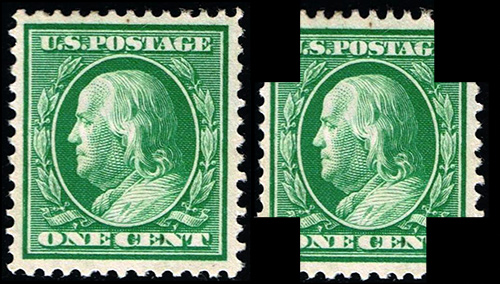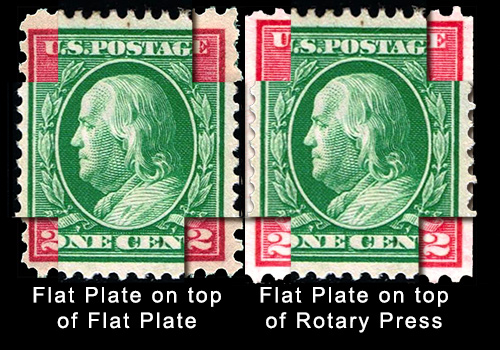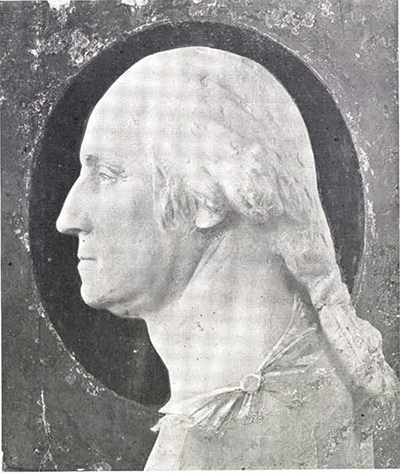Basic Info
5¢ Blue
Printing Method: FLAT PLATE
Subject: George Washington
Number issued: 1,208,187,883
Perforations: 10 vertically
Watermark: Single Line USPS wmk
Scott #: 447
Issued: July 30th, 1914
Value
As Pairs
Used
$55 - $70
No postmark with gum (MH)
$40 - $50
Full perfect gum, no postmark
no trace of stamp hinge mark (MNH)
$100 - $200
As Singles
Used
$5 - $7
No postmark with gum (MH)
$11 - $30
Full perfect gum, no postmark
no trace of stamp hinge mark (MNH)
$35 - $45
Scenes from the Bureau

Inspecting a new perforating machine at the Bureau of Engraving, Washington DC, circa 1920

Long shot of the print room in the Bureau of Engraving, Washington DC, 1913
Flat Plate?


As the curved plates of the Rotary press made the stamps slightly larger, it is relatively easy to discern which stamp is flat plate and which is a rotary press stamp. First, select any perf Washington Franklin stamp or the first issue Washington Franklin 1 cent or 2 cents. These are the stamps with the numbers one and two spelled out instead of numbers displayed. I chose the latter alternative, as shown in the first image above.
Then cut out squares at each corner, as shown in the second image above. Placing the stamp, you wish to test under your cut-out stamp to test if the frame lines match. If, as in the last image shown above, the frame lines are outside the top stamp in either the top, bottom, or sides then you have a rotary stamp. If the lines are in the same place, you have a flat plate stamp, as shown in the third image.
This test works with any value stamp.
The Design Inspiration

Using this photograph, the stamp designer Clair Aubrey Huston added the toga cord and button. The engravers of the stamp were M.W. Baldwin (who engaged almost all US stamps of this era. The lettering was engraved by Robert F. Ponicka and Edward M. Hall.
The Watermark

The watermark consists of single lined USPS letters. A stamp may show only part of a letter or letters








